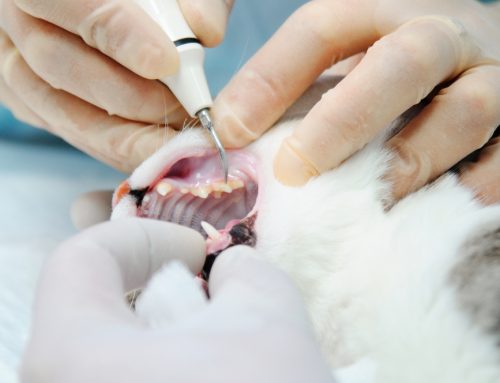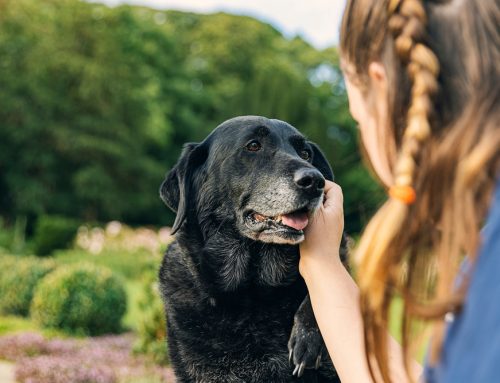 How do I decide what to feed my dog or cat?
How do I decide what to feed my dog or cat?
Assuming your pet is generally in good health, without any specific dietary sensitivities or food allergies… There is still no simple answer! There are countless options to choose from in a maintenance diet for dogs and cats, and a healthy pet will do reasonably well on almost any of them. That being said, some diets simply meet the basic requirements for nutritional content, while others provide higher-quality protein sources, more “natural” ingredients, supplements to support healthy joints or a shiny coat, fewer preservatives, and so on. It is worth mentioning that any brand – inexpensive or premium – can potentially have a recall.
So what is the difference between a bag of kibble that costs $15 at the supermarket and a premium brand for $40 at the pet store? Do these differences matter, or are pet owners just being tricked into spending more?
Let’s start with protein quality and digestibility. Any dry or canned food labeled as a complete diet meets the basic standards for protein content, but the sources of protein can vary. Both meat and grains are sources of protein, but in general, higher-quality meat is a superior protein source due to the fact it provides a better amino acid balance.
Read the label of your pet’s food – you may see the words “poultry,” “poultry byproduct,” or “chicken meal.” These terms may sound vague (and have you fearing what “byproduct” might contain), but they have specific meanings:
Meat – The flesh of any species of slaughtered mammal, typically pork, beef, or sheep.
Poultry – The flesh, skin, and bone of domestic poultry; typically chicken, turkey, or duck.
Byproduct – Parts of animals not typically used as human food, such as organ meat (liver, kidney, etc), fat tissue, bone, and viscera.
Meal – Any ingredient that has been ground down to a small particle size (for example, “chicken meal” would mean the flesh, skin, and bone of chicken).
Though the organ meat (liver, kidneys, etc) contained in a “by-product” is not typically part of an American diet, these are excellent nutrient sources and provide high-quality protein. Bone meal is a good source of calcium, but the protein it contains is not readily digested by cats and dogs.
“Whole chicken” as a first ingredient may give us the impression of a less-processed superior quality diet, but whole chicken used in pet foods is high in fat and contains 60-70% water! This high volume may earn it the first place in the ingredient list, but leaves it as a small contributor to protein content, and leaves it more important as a fat source.
Plants such as corn, soybean, and flaxseed may also be used as protein sources. Their digestibility is equivalent to some animal protein sources, but they are deficient in some of the amino acids required in canine and feline diets, so for this reason we would hope not to see plant-based products as a primary ingredient. If soy accounts for 50% or more of a diet’s protein, loose stool and flatulence may result.
All this information may leave you with more questions than answers about your pet’s food. We invite you to discuss your pet’s diet with your veterinarian at your next appointment – as we began saying, every pet is an individual with their own needs and preferences – there is no simple answer!
What about limited ingredient diets? Grain free? Raw diets?
For pets with special needs (food sensitivities or allergies, for example) a specialized diet may be the key to solving their problems. However, there is a specific way to determine the best diet for a food-allergic dog… just switching brands is not likely to be the answer. Feeding a raw diet is a point of controversy, but if done correctly, it may provide a solution as well. These topics are beyond the scope of this blog post (we’ll write another, we promise), but we hope you’ll discuss this with your vet if the need arises.
How much should I feed my pet?
No quick answer here either! Most brands of pet food will provide guidelines for how much to feed based upon weight. This amount is frequently an overestimate (after all, they’d like you to buy more of their product!), so you may use this as a starting point, but pay attention to your pet’s weight and adjust accordingly. Feed a measured amount – not “a handful” but a measured cup – so that you will be better able to increase or decrease the amount fed as needed.
How do I know if my pet is overweight?
Of course your veterinarian can provide guidance on this topic, but in general, your pet should have a “waist” when viewed from above or from the side. Place your hands flat over the sides of her chest… with very gentle pressure, you should be able to easily feel where her ribs are. If finding her ribs requires poking in with your fingertips, or if you can’t feel them at all, she is overweight. Maintaining an appropriate weight contributes to better overall health and even an extended lifespan!
Can I feed a home-prepared diet?
Many recipes are available for home-cooking for your pets. However, it is essential to be certain what we choose to feed on our own is nutritionally complete, particularly if the recipe being used is not approved by a veterinarian. Many veterinary teaching hospitals and referral centers offer a nutrition consult service, and can tell you exactly what vitamins and supplements may be necessary to balance any home-cooked diet. Here are links to a few:
Angell Memorial – http://www.angell.org/vet-services/angell-boston/nutrition/ (provides recipes)
Cornell – http://www.vet.cornell.edu/hospital/Services/Companion/Nutrition/
Ohio State – http://vet.osu.edu/nssvet
Davis- http://nutrition.vetmed.ucdavis.edu/index.cfm
To download and print this article, please click here.






Leave A Comment